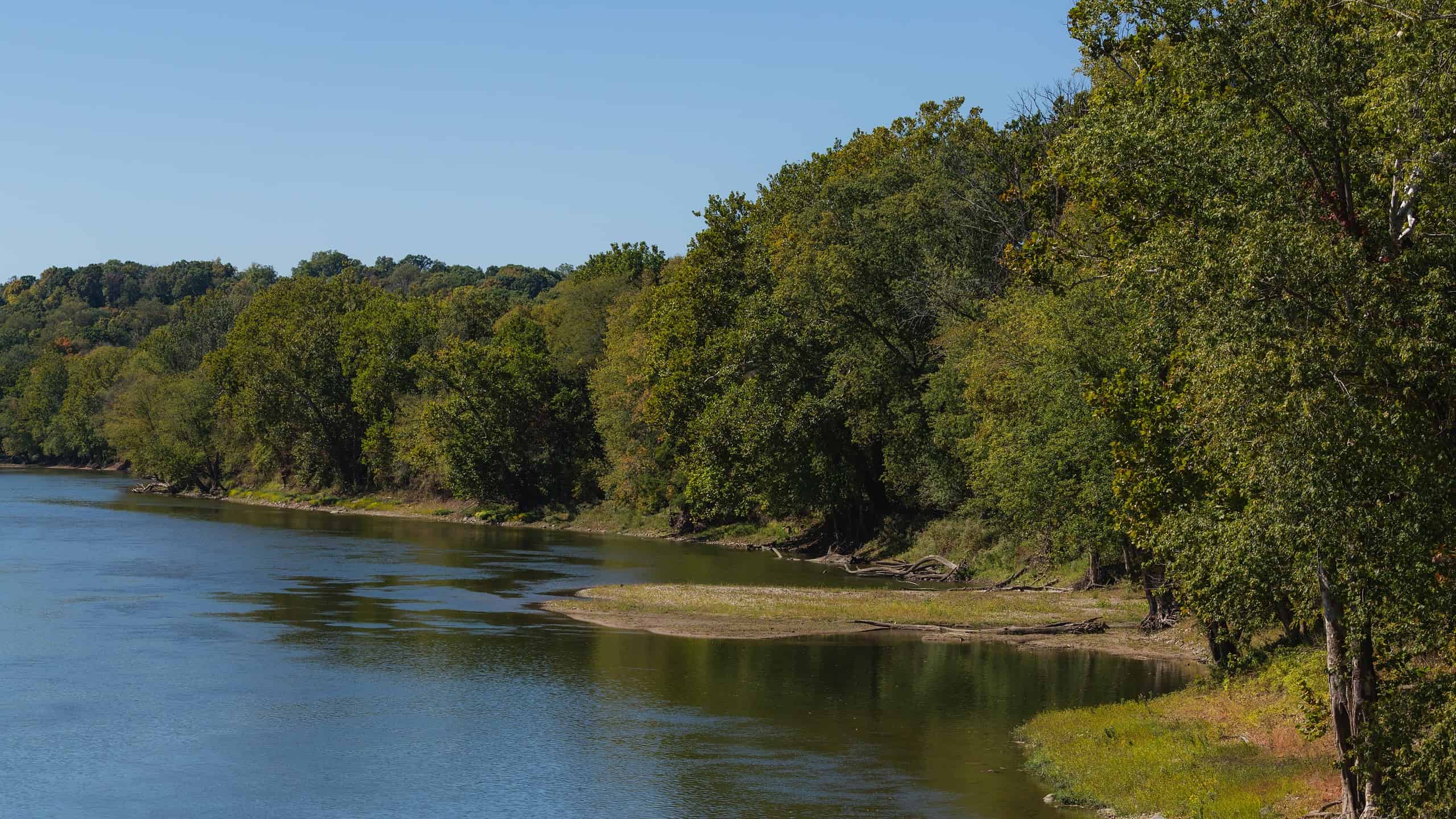Located in three midwest states, Ohio, Indiana, and Illinois, the Wabash River is an important ecological fixture in this vast agricultural area. Not only is it vital for the environment and natural landscape, but it is also instrumental in crop irrigation and drinking water for major portions of this area. The area provides a natural habitat for a variety of plant and animal species. Here are the must-know facts about this important river as well as steps you can take to preserve it for generations to come.
Depth of the Wabash River
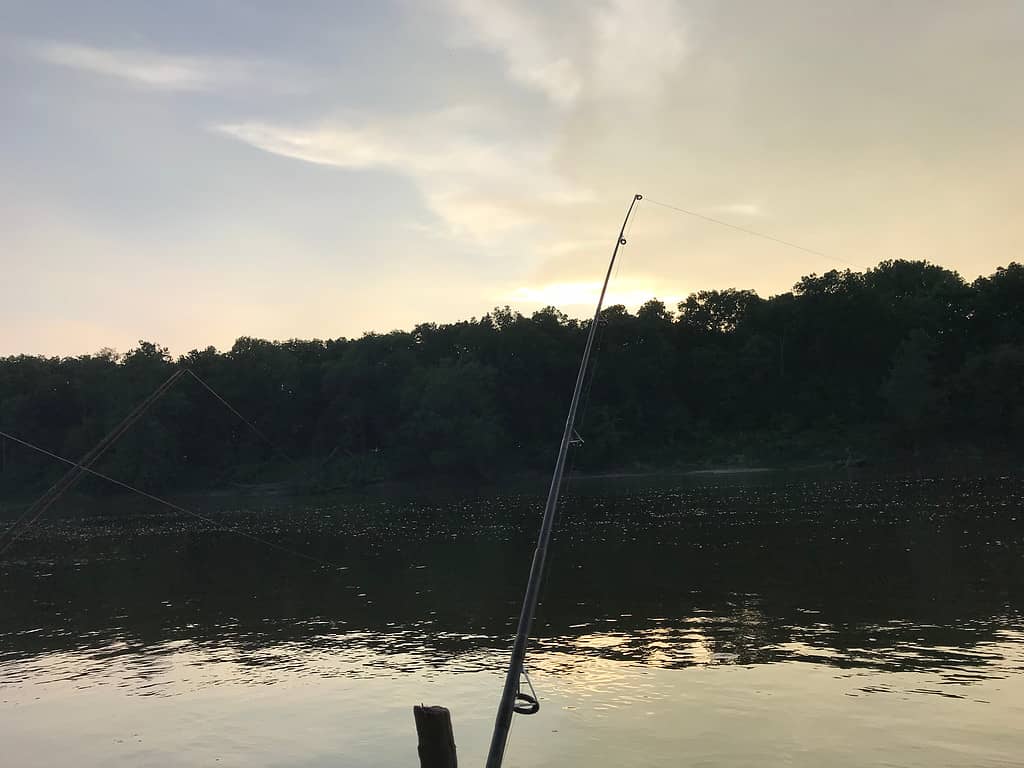
The Wabash River is a great spot for fishing in the Midwest.
©BBViews/Shutterstock.com
The exact depth of the Wabash River can vary greatly along its length. At its deepest points, mostly in the last 50 miles of the river until it joins the Ohio River, it is often around 30 feet deep. Further upriver in Indiana and Ohio, the river is much shallower. It is not unusual for the river to be as little as 5 feet deep in places.
The river flows for over 400 miles from its headwaters near the small town of Fort Recovery, Ohio in Mercer County. From there, the river travels through Ohio and Indiana until it eventually joins the Ohio River at the Indiana-Illinois state line. It is a major watershed for the entire state of Indiana and provides drinking water for the state as well.
The river is especially important in Indiana, where it provides drinking water for almost three-quarters of the counties in the state. The Wabash River is the state river of Indiana. There were even four ships in the U.S. Navy named the USS Wabash after the river, the most recent being an oiler which was decommissioned in 1994.
Ecology of the Wabash River
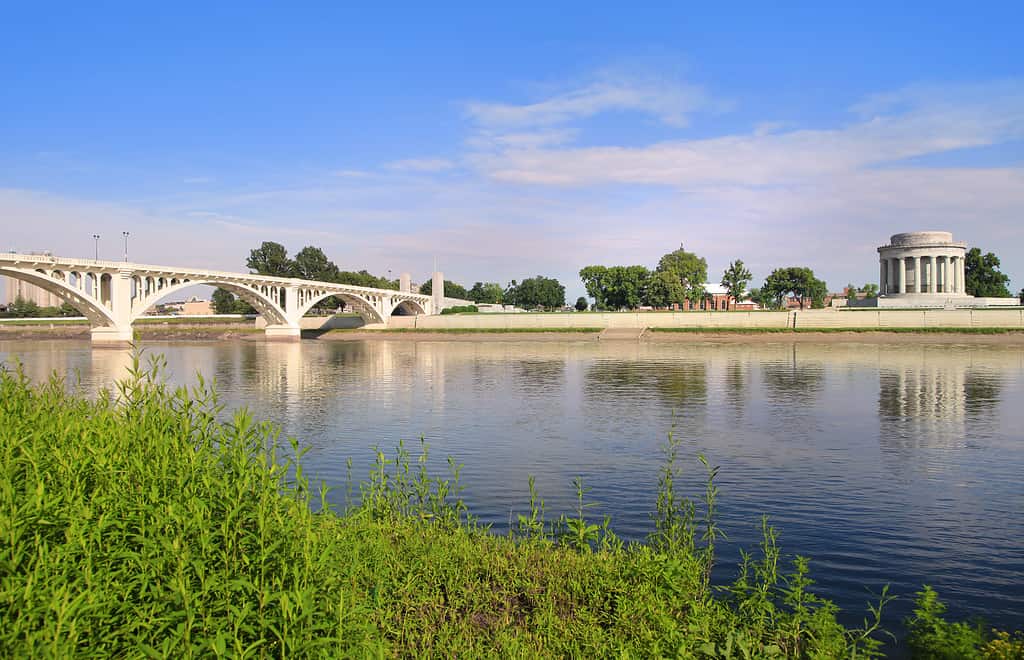
Even though it is beautiful, the Wabash River is not safe to swim in due to pollution.
©SNEHIT PHOTO/Shutterstock.com
The Wabash River is a beautiful place to visit or explore, whether you are a resident enjoying the landscape or a visitor coming from other parts of the state, country, or world. The Wabash River is known for its breathtaking natural beauty. Because it covers such a long area, there are plenty of places for everything from hiking to fishing to camping. Some activities, including swimming, fishing, and camping, are prohibited in some areas. When the risk of e. Coli or other pathogens are detected, these activities may also be prohibited to keep the public safe.
The bottom of the river features white limestone and other rocks and sediment. There is also plenty of mud, making the bright white limestone hard to distinguish at times.
Animals in the Wabash River
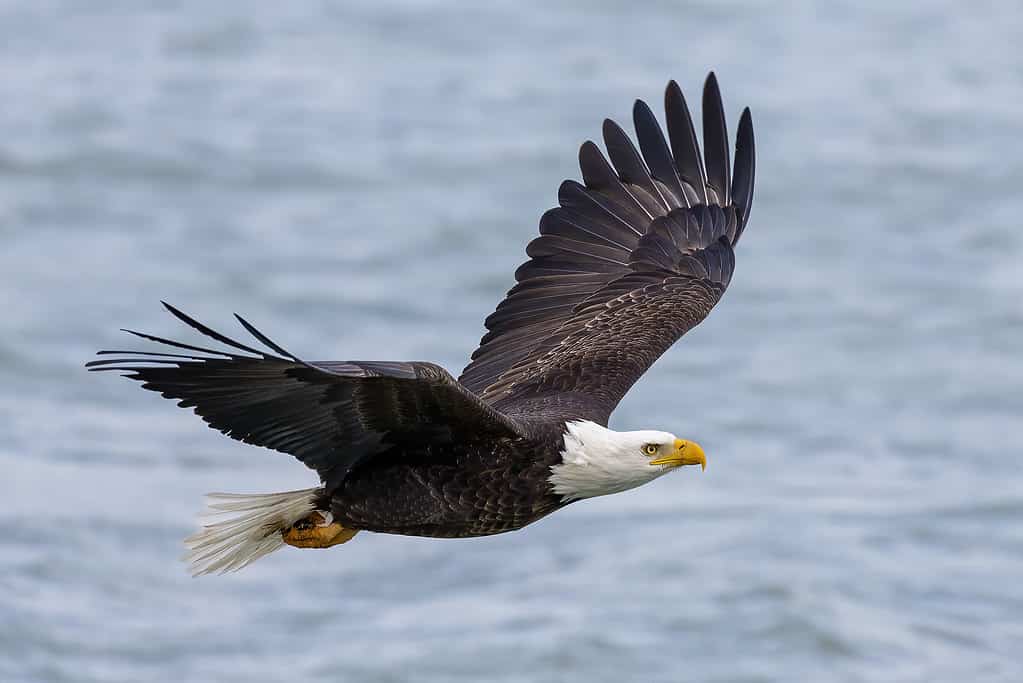
Bald eagles are typically found near bodies of water.
©iStock.com/Karel Bock
Many animal species call the shores of the Wabash, the areas surrounding it, or the actual river itself home. There are over 150 species of fish within its waters. Largemouth and smallmouth bass, rock bass, and catfish are all plentiful fish in the deeper portions. Where the depth is shallower, you’re more likely to see wunfish or bluegill. Smallmouth bass fishing is particularly excellent along the Wabash River. You’ll also likely see snakes slithering in the river if you look closely.
Forests and wetlands are the most common habitats around the river. On the shore, animals like bobcats and raccoons are plentiful. Bats, deer, squirrels, and beavers are also active residents in this area. It’s also possible to see wild turkey and many songbirds when watching for wildlife in this area. Osprey and bald eagles make their nests around the Wabash River and can be seen soaring over the water looking for food.
Things to Do at the Wabash
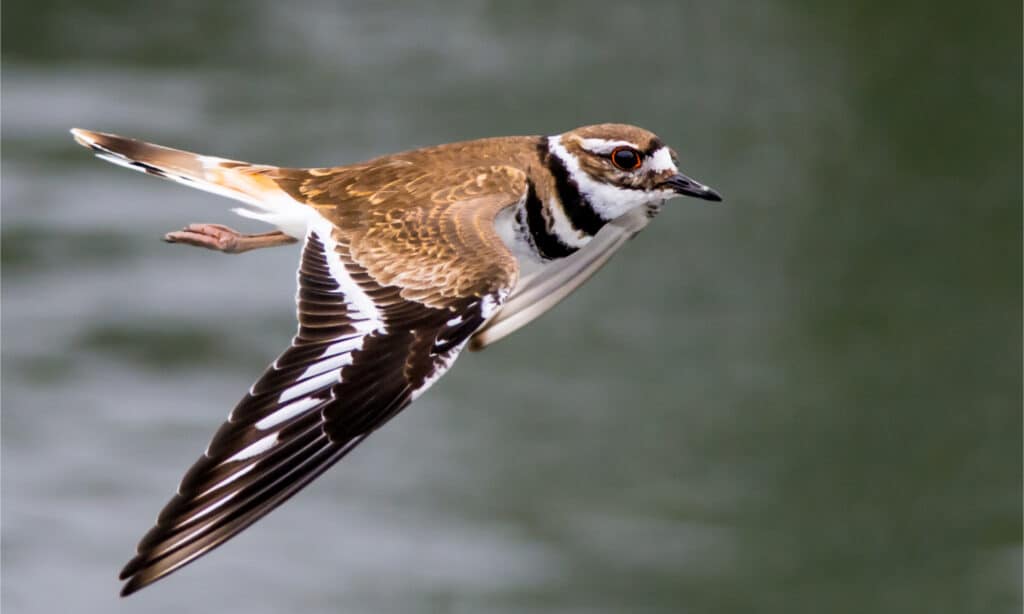
Frequently seen around the Wabash River by observant birders, killdeer have wings which are 18 – 19 inches long, sharp, and angular.
©JoshCW Photo/Shutterstock.com
There are plenty of ways to enjoy your time at the Wabash River. While swimming is not allowed, other activities like shore fishing and hiking are great. The Wabash is also a fantastic place for birdwatching and photography.
You’ll likely see a lot of barges and transportation vessels traversing the Wabash. If you are interested in different types of ships and shipping, just watching them travel up and down the river can be a fun activity. Many of them transport coal and petroleum, although grain, fertilizer, and timber are also common. If you are more interested in recreational boating, visit one of the marinas on the bank to either rent a boat, hirea. charter, or put your own boat in the water. You might need a permit, however, depending on the activity.
Wabash Riverfest
The Wabash Riverfest is held annually in the summer at Lafayette, Indiana. The festival focuses on the beauty and fun of the Wabash. You can do everything from canoe or kayak to run a 5K to draw a river scene. There are also exhibits on the environment and conservation, including ways to help preserve the beauty of the Wabash.
Canoe races during Wabash Riverfest are a popular event. Crews of 9 people paddle provided canoes along a 300-yard route. If you want something less competitive, float trips from Davis Ferry Park to Tapawingo Park are perfect. The entire event is free to bring the community together and celebrate the river, while raising awareness and educating the public about keeping the Wabash clean.
Where Is the Wabash River Located on a Map?
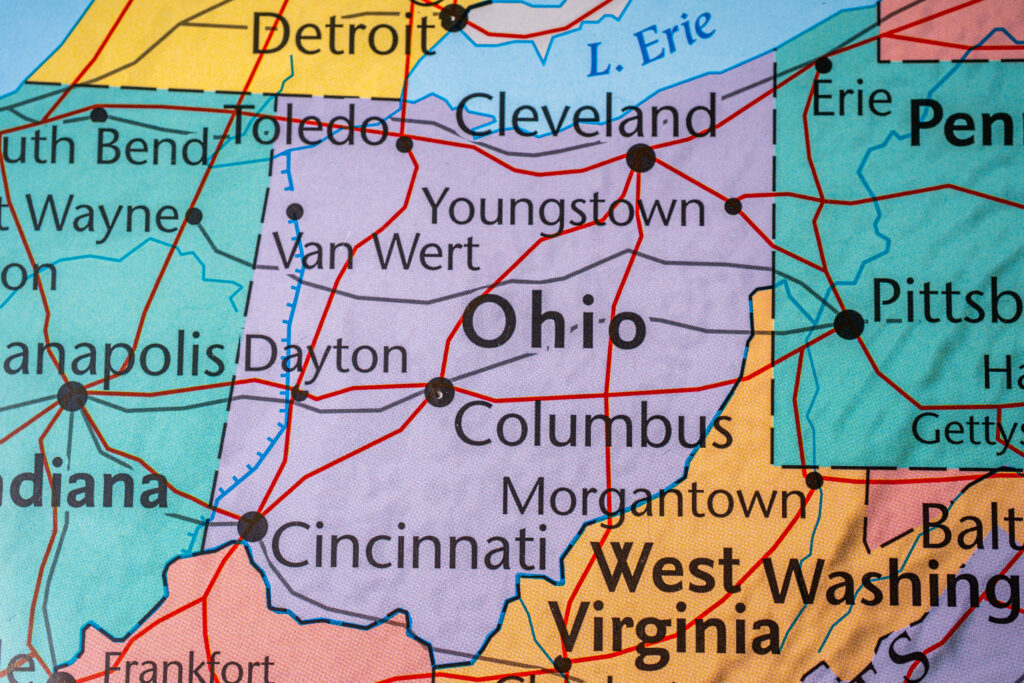
Ohio is located in the Midwest region, bordering Indiana, and is the location of the origin of the Wabash River.
©Alexander Lukatskiy/Shutterstock.com
The Wabash River begins on the western side of Ohio and enters Indiana shortly after. It goes across the middle part of the state and then turns south to form the border between Indiana and Illinois. The Wabash eventually joins the Ohio River in Southern Illinois. It is a key river in the Midwest region of the United States, playing an important role in both culture and industry.
Preserving Wildlife and Habitat

Logansport is located at the Wabash and Eel Rivers meeting point and is the seat of Cass County.
For many years, Native American tribes including the Miami, Shawnee, and Delaware peoples recognized the importance of the Wabash River. Many considered the river to be sacred. Even after the arrival of European settlers and the establishment of permanent settlements that developed into modern towns and cities around the Wabash, the river played an important role in both commerce and culture. Unfortunately, much of that development took a toll on the environment. Many of the towns on the Wabash have historic significance and are good examples of how life and community relied on the river.
The Wabash River watershed is an important part of the ecosystem that is vital for both plant and animal life. However, it has also been drained and developed for decades, which is now causing some issues for native species. Flooding and riverbank erosion have both increased. The water quality has also gone down. This has a direct impact on the many human residents of these states who rely on the water from the Wabash River and the Wabash River watershed for drinking water.
Fortunately, awareness campaigns have helped residents become more aware of these issues. Industrial pollution in particular has been targeted since much of the pollution in the Wabash is due to large-scale businesses that operated along the river for decades before the full impact of the pollution was detected. Unfortunately, it still remains too polluted to swim in and people should be careful even during water sports.
The Ohio River, which the Wabash River feeds into, is also heavily polluted. Conservation work and efforts to raise awareness have helped clean up the two rivers.
Thank you for reading! Have some feedback for us? Contact the AZ Animals editorial team.

